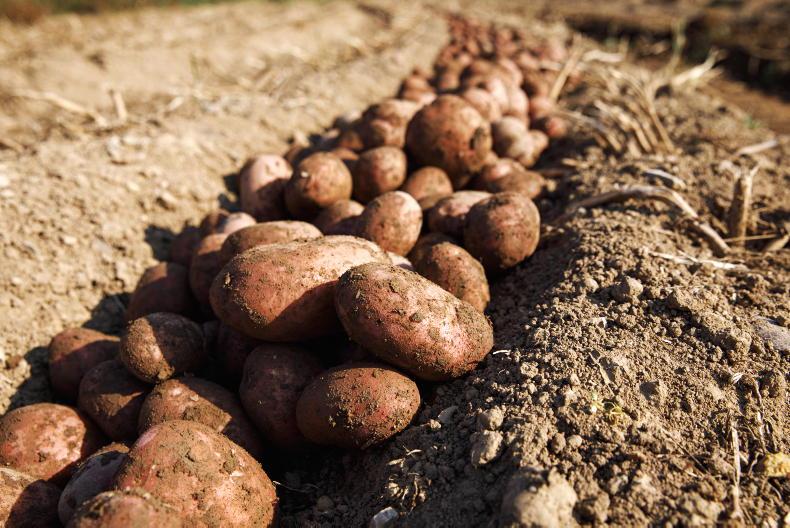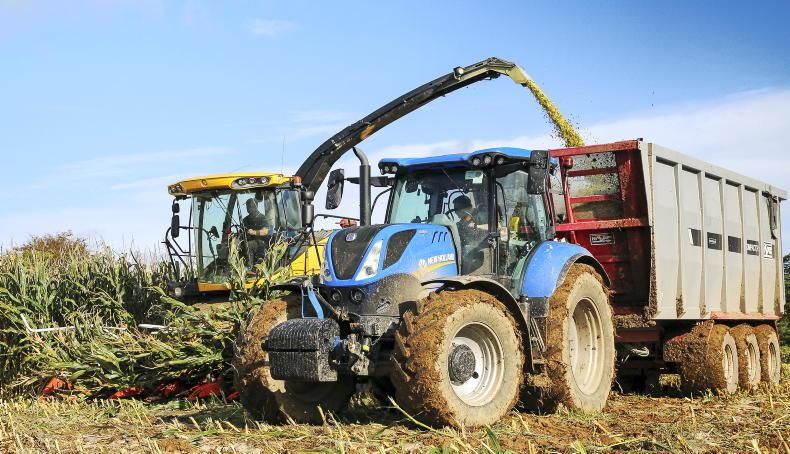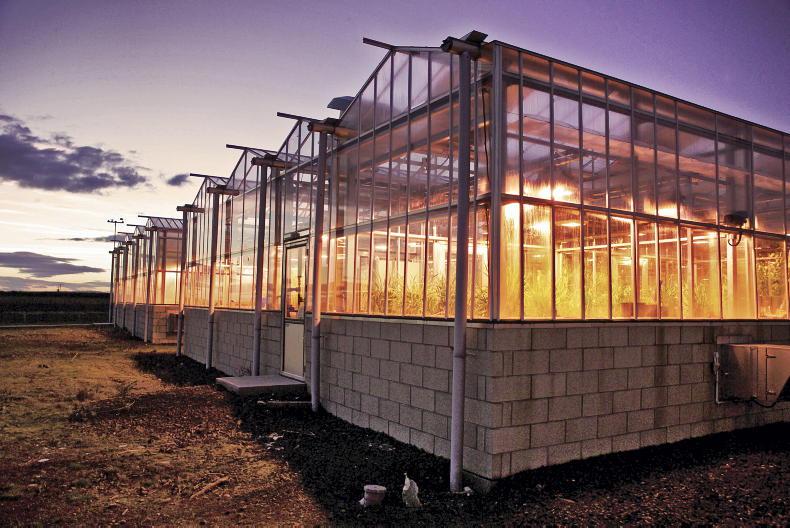An important element of research, sometimes overlooked in agriculture, is knowledge transfer and innovation.
However, understanding how research information is transferred to farmers, and how they adopt new practices, is crucial. The UCD/Teagasc Masters in Agricultural Innovation Support and Masters in Agricultural Extension and Innovation programmes aim to equip graduates with the skills to help farmers adopt new practices and technologies.
UCD/Teagasc’s annual Knowledge Transfer conference took place online in October, showcasing the research outcomes from these masters programmes.
A streamlined process is necessary to instil trust and provide quality, timely results to growers to inform the decision-making process
Three research projects which were particularly relevant to the tillage industry were featured.
We recently caught up with these students about their projects.
Factors influencing
tillage students’
decision to diversify

Eoin
Sweetman
Shifting market trends and agricultural policy objectives, mean that diversification is being promoted and built into EU agriculture and rural development policy.
Currently, there are opportunities to diversify from conventional tillage farming into the horticultural food production sector. This study sought to analyse the factors influencing the decision to diversify into horticulture, from the perspective of level five tillage students attending Kildalton Agricultural College.
The students were surveyed initially to assess their reactions to diversification and horticulture.
Students were then shown videos of horticultural businesses to enhance their knowledge of the sector. They were interviewed later to gauge the factors that would influence their decision to diversify.
Social pressure
The results of this study showed that students had a strong traditional and social attachment to tillage farming, which was heavily influenced by their environment. This tradition and social pressure to continue tillage farming acts as a barrier to farm innovation and to exploring alternatives.
Students had a negative attitude to the horticultural sector, perceiving it to be amenity, landscaping and back-garden focused. This came from a lack of knowledge on the sector, as horticulture includes several highly advanced sub-sectors, the main ones being fruit, vegetables, mushrooms, nursery stock/ornamentals and cut foliage.
Agronomically, field vegetable production has more similarities to conventional tillage than any other agricultural sector. Having been exposed to the horticultural industry, the students identified land utilisation and potential to improve farm viability as major benefits from horticultural food production.
While tillage itself has lots of diversification, a move into horticulture requires a more innovative and transformative business approach. Agricultural education and advisory bodies must consider how they can facilitate this type of innovation for students and farmers.
This research proposes that further innovation modules be introduced in agricultural colleges to increase student exposure to other sectors within agriculture and horticulture.
Increased investment is required in horticultural market research, technical research, and advice. This is important to help develop and distribute detailed information on opportunities within the sector and also to nurture innovation within the farming community.
Project supervisors: Dr Monica Gorman (UCD), Dermot Callaghan (Teagasc), Andy Whelton (Teagasc) and Stephen Alexander (Teagasc). Supporting potato farmers and agronomists to assess risk of cadmium

Blair
Ruffing
Cadmium is a heavy metal found in soils all around the world. The maximum permitted levels of cadmium allowed in food are set by the EU.
However, there are ongoing discussions taking place with regard to lowering those maximum levels, which could make meeting new thresholds difficult for potato growers in the northeast of Ireland.
The northeast region is one of the most intensive horticultural areas in the country but it also has relatively high levels of cadmium in its soils.
This research study sought to examine the knowledge and attitudes of potato growers and agronomists in the region to cadmium.

The northeast region a highly intensive horticultural area but it also has relatively high levels of cadmium in its soils.
It also assessed their experience with using a potato cadmium-level risk assessment model.
Mixed results
Thirty-nine growers and seven agronomists participated in one-on-one interviews and surveys regarding their awareness of heavy metal contamination and their intentions to mitigate. Results from the grower interviews and surveys revealed a very low level of awareness regarding the cadmium issue in Ireland but also a high level of intention to mitigate.
Analysis of the seven agronomist interviews and surveys revealed a very high level of awareness and concern regarding the cadmium issue.
However, it found a low level of knowledge on possible mitigation measures and a low rate of clients being advised on the issue.
Risk assessment model
While the growers’ responses suggested a high level of intention to engage with the cadmium risk-assessment model, only five of those 39 growers actually undertook a soil cadmium analysis.
Opinion-based surveys completed by three of those five growers revealed that the cost of using the risk assessment model was a non-issue. However, the time it took to receive the results stood out as the main reason not to use the model.
Actions
Therefore, a streamlined process is necessary to instil trust and provide quality, timely results to growers to inform the decision-making process.
This research offers insights into understanding best practice when communicating unpalatable messages to farmers. This must be done in a way that allows growers to see the best possible outcomes so that the message is welcomed and accepted by the farmer.
Project supervisors: Dr Monica Gorman (UCD) and Shay Phelan (Teagasc).Encouraging
contract cropping agreements

Lisa
O’Toole
Collaborative farm structures such as contract cropping agreements have the potential to increase the social, economic and environmental sustainability of both the livestock and tillage sectors in Ireland.
A contract cropping agreement involves a tillage farmer entering into a contract with a livestock farmer to grow a fodder crop such as maize or fodder beet.
However, contract cropping agreements within Ireland have been subject to little in-depth examination to date.

Contract cropping agreements can improve the sustainability of both the tillage and livestock sectors.
This study addresses this gap by examining the challenges and success factors in the operation of contract cropping relationships between growers and end users, so as to maximise the potential use of land and fodder resources.
Key factors
While the project is in its first year, the findings so far indicate that approximately 9% of farmers in the reference sample are involved in a contract cropping agreement.
Factors such as the form of contract, pricing options, policy implications, weather events and external agents all influence a farmer’s decision to enter a contract cropping agreement.
Key success factors of an agreement include customising it to meet the requirements of the party’s involved, regular communication and an instalment payment plan.
Improving sustainability
The findings so far point to the potential of contract cropping agreements to improve the sustainability of both the tillage and livestock sectors. This is done by providing alternative market opportunities for the tillage sector, addressing the land constraint issues on intensive dairy farms, supporting Origin Green credentials by providing traceable animal feed and improving the recycling of nutrients.
Project supervisors: Prof Michael Wallace (UCD) and Peter Doolan (Teagasc).
An important element of research, sometimes overlooked in agriculture, is knowledge transfer and innovation.
However, understanding how research information is transferred to farmers, and how they adopt new practices, is crucial. The UCD/Teagasc Masters in Agricultural Innovation Support and Masters in Agricultural Extension and Innovation programmes aim to equip graduates with the skills to help farmers adopt new practices and technologies.
UCD/Teagasc’s annual Knowledge Transfer conference took place online in October, showcasing the research outcomes from these masters programmes.
A streamlined process is necessary to instil trust and provide quality, timely results to growers to inform the decision-making process
Three research projects which were particularly relevant to the tillage industry were featured.
We recently caught up with these students about their projects.
Factors influencing
tillage students’
decision to diversify

Eoin
Sweetman
Shifting market trends and agricultural policy objectives, mean that diversification is being promoted and built into EU agriculture and rural development policy.
Currently, there are opportunities to diversify from conventional tillage farming into the horticultural food production sector. This study sought to analyse the factors influencing the decision to diversify into horticulture, from the perspective of level five tillage students attending Kildalton Agricultural College.
The students were surveyed initially to assess their reactions to diversification and horticulture.
Students were then shown videos of horticultural businesses to enhance their knowledge of the sector. They were interviewed later to gauge the factors that would influence their decision to diversify.
Social pressure
The results of this study showed that students had a strong traditional and social attachment to tillage farming, which was heavily influenced by their environment. This tradition and social pressure to continue tillage farming acts as a barrier to farm innovation and to exploring alternatives.
Students had a negative attitude to the horticultural sector, perceiving it to be amenity, landscaping and back-garden focused. This came from a lack of knowledge on the sector, as horticulture includes several highly advanced sub-sectors, the main ones being fruit, vegetables, mushrooms, nursery stock/ornamentals and cut foliage.
Agronomically, field vegetable production has more similarities to conventional tillage than any other agricultural sector. Having been exposed to the horticultural industry, the students identified land utilisation and potential to improve farm viability as major benefits from horticultural food production.
While tillage itself has lots of diversification, a move into horticulture requires a more innovative and transformative business approach. Agricultural education and advisory bodies must consider how they can facilitate this type of innovation for students and farmers.
This research proposes that further innovation modules be introduced in agricultural colleges to increase student exposure to other sectors within agriculture and horticulture.
Increased investment is required in horticultural market research, technical research, and advice. This is important to help develop and distribute detailed information on opportunities within the sector and also to nurture innovation within the farming community.
Project supervisors: Dr Monica Gorman (UCD), Dermot Callaghan (Teagasc), Andy Whelton (Teagasc) and Stephen Alexander (Teagasc). Supporting potato farmers and agronomists to assess risk of cadmium

Blair
Ruffing
Cadmium is a heavy metal found in soils all around the world. The maximum permitted levels of cadmium allowed in food are set by the EU.
However, there are ongoing discussions taking place with regard to lowering those maximum levels, which could make meeting new thresholds difficult for potato growers in the northeast of Ireland.
The northeast region is one of the most intensive horticultural areas in the country but it also has relatively high levels of cadmium in its soils.
This research study sought to examine the knowledge and attitudes of potato growers and agronomists in the region to cadmium.

The northeast region a highly intensive horticultural area but it also has relatively high levels of cadmium in its soils.
It also assessed their experience with using a potato cadmium-level risk assessment model.
Mixed results
Thirty-nine growers and seven agronomists participated in one-on-one interviews and surveys regarding their awareness of heavy metal contamination and their intentions to mitigate. Results from the grower interviews and surveys revealed a very low level of awareness regarding the cadmium issue in Ireland but also a high level of intention to mitigate.
Analysis of the seven agronomist interviews and surveys revealed a very high level of awareness and concern regarding the cadmium issue.
However, it found a low level of knowledge on possible mitigation measures and a low rate of clients being advised on the issue.
Risk assessment model
While the growers’ responses suggested a high level of intention to engage with the cadmium risk-assessment model, only five of those 39 growers actually undertook a soil cadmium analysis.
Opinion-based surveys completed by three of those five growers revealed that the cost of using the risk assessment model was a non-issue. However, the time it took to receive the results stood out as the main reason not to use the model.
Actions
Therefore, a streamlined process is necessary to instil trust and provide quality, timely results to growers to inform the decision-making process.
This research offers insights into understanding best practice when communicating unpalatable messages to farmers. This must be done in a way that allows growers to see the best possible outcomes so that the message is welcomed and accepted by the farmer.
Project supervisors: Dr Monica Gorman (UCD) and Shay Phelan (Teagasc).Encouraging
contract cropping agreements

Lisa
O’Toole
Collaborative farm structures such as contract cropping agreements have the potential to increase the social, economic and environmental sustainability of both the livestock and tillage sectors in Ireland.
A contract cropping agreement involves a tillage farmer entering into a contract with a livestock farmer to grow a fodder crop such as maize or fodder beet.
However, contract cropping agreements within Ireland have been subject to little in-depth examination to date.

Contract cropping agreements can improve the sustainability of both the tillage and livestock sectors.
This study addresses this gap by examining the challenges and success factors in the operation of contract cropping relationships between growers and end users, so as to maximise the potential use of land and fodder resources.
Key factors
While the project is in its first year, the findings so far indicate that approximately 9% of farmers in the reference sample are involved in a contract cropping agreement.
Factors such as the form of contract, pricing options, policy implications, weather events and external agents all influence a farmer’s decision to enter a contract cropping agreement.
Key success factors of an agreement include customising it to meet the requirements of the party’s involved, regular communication and an instalment payment plan.
Improving sustainability
The findings so far point to the potential of contract cropping agreements to improve the sustainability of both the tillage and livestock sectors. This is done by providing alternative market opportunities for the tillage sector, addressing the land constraint issues on intensive dairy farms, supporting Origin Green credentials by providing traceable animal feed and improving the recycling of nutrients.
Project supervisors: Prof Michael Wallace (UCD) and Peter Doolan (Teagasc). 
















SHARING OPTIONS